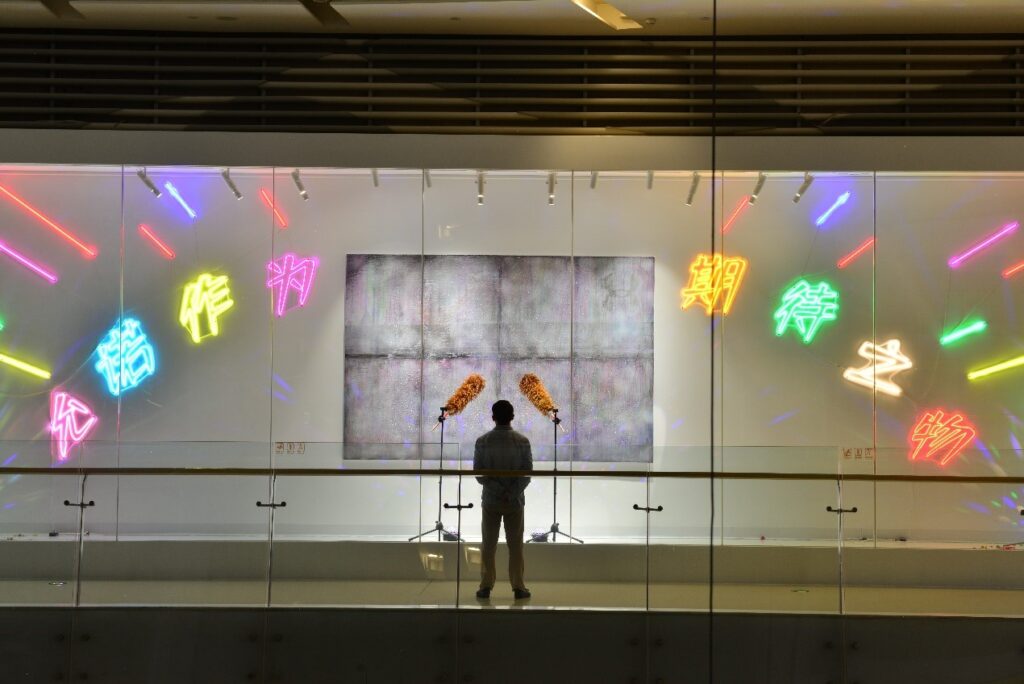
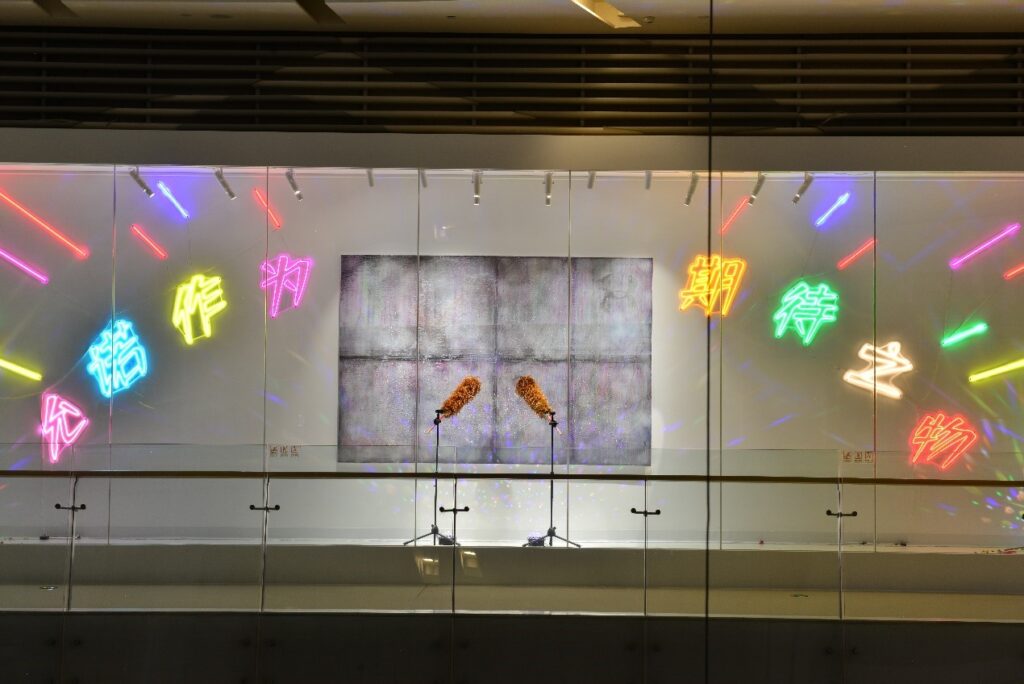
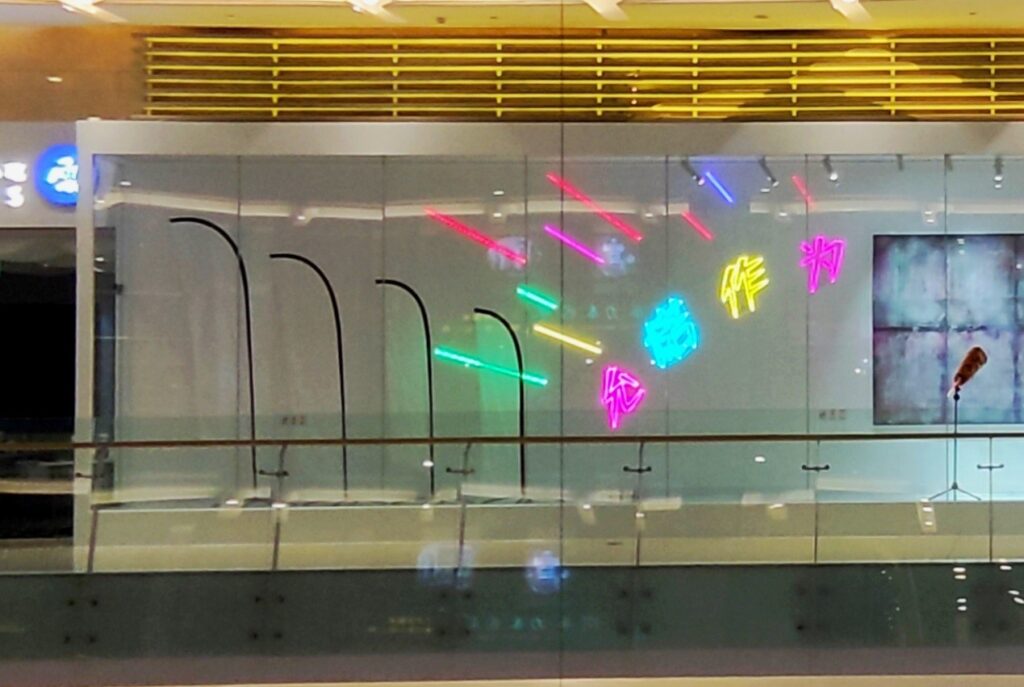
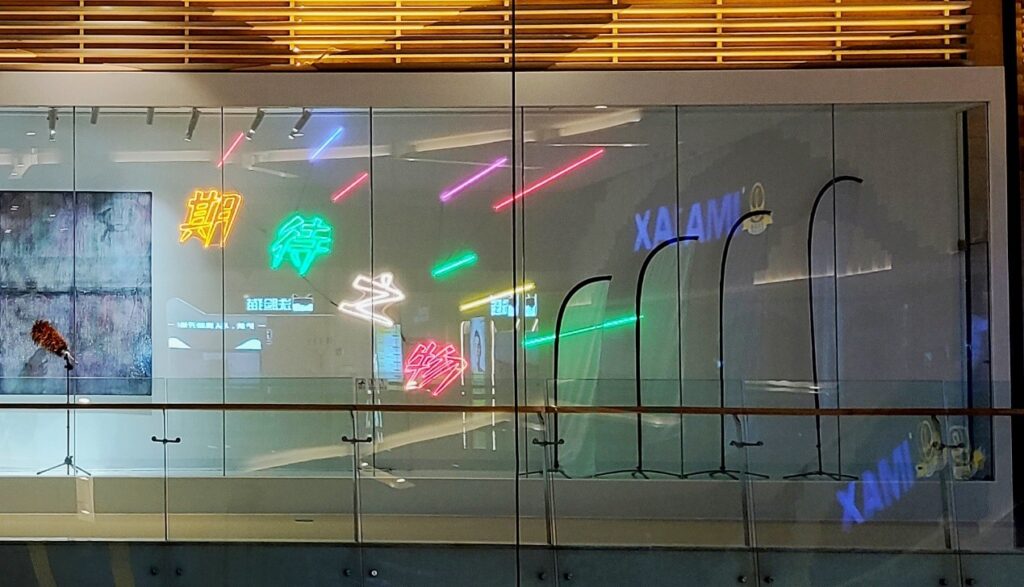
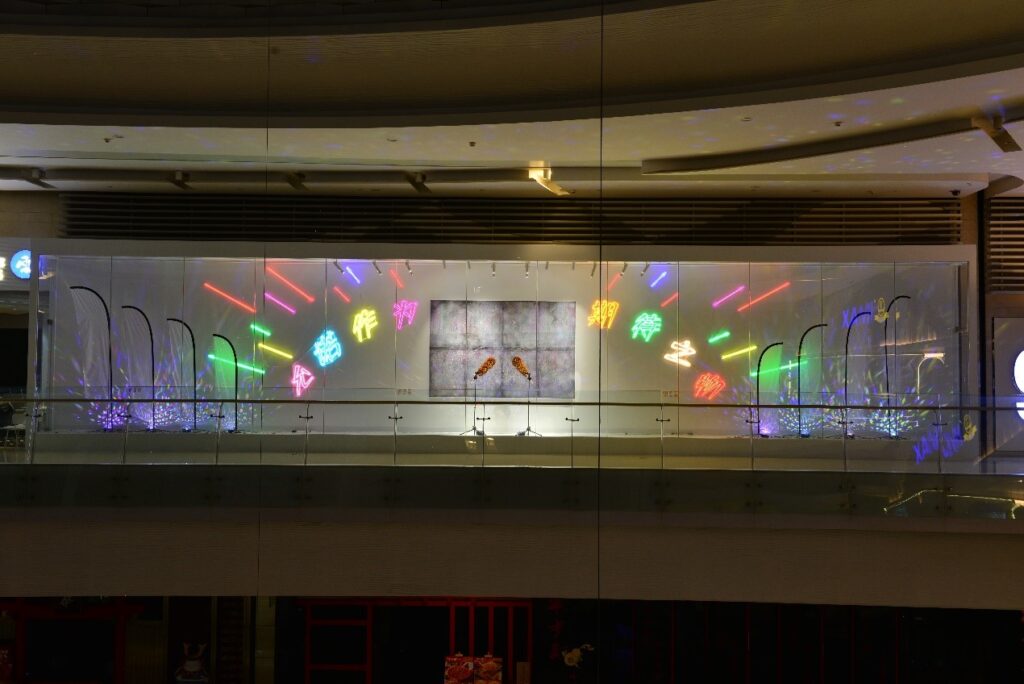
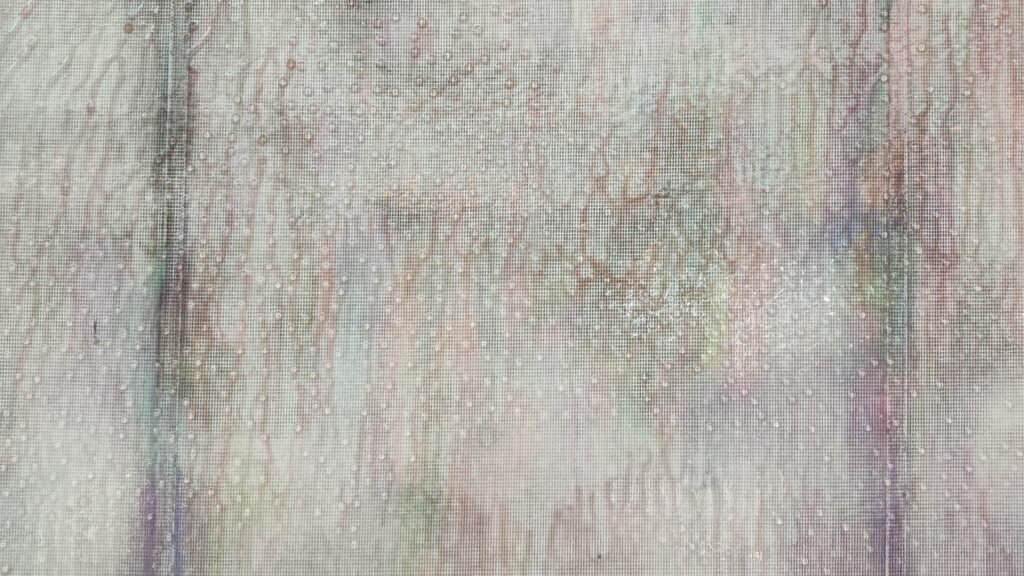
郭棚橱窗项目《允诺作为期待之物》
作品名称:《允诺作为期待之物》
类型:装置 尺寸可变
在所有在场性的视觉指涉中,图像是如何让我们的身体衍生与他者接触的法则,从而获取在与整个外部世界的关联中所不断增加的意识并保留在特定的场域里?—是我关注的图像核心命题。一切功能性的指涉都注定消失于阴影之中,唯有二者的集合体可以继续保持一个独立的客观现实,在以橱窗广告为基础的图像传播与指涉的线索中对图像的本体进行探讨。一个开放且封闭的空间里,图像的多种生成方式与功能性的场域展开对话,图像的存在形式、关系的存在形式以及相处的存在形式共同构成为一个相互指涉的逻辑剧场,此刻广告“图像”本身已经隐退,而仅仅是折射于个体与应允期待之物的交集,艺术家在此探索图像所引发的意识在内与外,现实与虚幻,有形与无形之间所形成的引力场。“图像”的允诺之物成为唯一期待的边界。
作品组成说明:
中间画面为安德玛收藏的我的一件作品,他们把这件作品制作成了广告,我把整个广告画面用刀片,砂纸打磨后用透明树脂将画面制作成有显像管颗粒的仅剩“混沌意识”的“表皮”倒挂于橱窗正中。两个鸡毛掸做成的“话筒”正对着“意识的表皮”。两边为8面空白广告旗,从低至高依次排列。环绕画面为霓虹灯制作的一句短语“允诺作为期待之物”。 整件作品是我对这个“消费与权力”合谋的景观社会的一种回应。 (关于“景观社会”是法国思想家、哲学家,居伊·德波(Guy Debord)的理论。他绕“景观”这一概念,指出当代社会正处于从马克思所面对的资本主义物化时代向社会景观之王国的过渡之中,在这种新的历史断代里,整个社会生活显示为一种巨大的景观的积累,景观关系中纯客观性的拜物教式表象,掩盖了人与人、阶级与阶级之间的关系。他认为“世界已经被拍摄”,发达资本主义社会已进入影像物品生产与物品影像消费为主的景观社会,景观已成为一种物化了的世界观,而景观本质上不过是“以影像为中介的人们之间的社会关系”,“景观就是商品完全成功的殖民化社会生活的时刻”。因此,与马克思分析的商品社会相比,这是一种役人于无形的更加异化的社会。在这一意义上,秉承了先锋派艺术理论遗产,又与西方马克思主义批判理论血脉相联的居伊·德波,其思想正处于由西方马克思主义向后马克思主义演变的过渡点上)。
The Promise as the Object of Expectation
In all forms of visual references rooted in presence, how does the image allow our bodies to derive a law of contact with others, thus enabling a growing consciousness of connection with the external world, contained within a specific field? This question forms the core theme of my interest in images. All functional references are destined to disappear into shadows, with only the aggregate of both continuing to sustain an independent objective reality. This inquiry into the essence of the image unfolds within the clues of image dissemination and references based on storefront advertising. In an open yet enclosed space, various ways of image generation engage with the functional space, wherein the forms of existence of images, relationships, and interaction constitute a logical theater of mutual reference. At this moment, the “image” as advertisement retreats, becoming merely a reflection of the intersection between the individual and the promised object of expectation. The artist here explores the gravitational field between the inner and outer realms, reality and illusion, the tangible and intangible, formed by the consciousness generated from the image. The “promise” inherent in the “image” becomes the sole boundary of expectation.
In the center of this piece is one of my works collected by Under Armour, transformed by them into an advertisement. I cut and sanded the entire advertisement and coated it with transparent resin, creating a “skin of chaotic consciousness” composed of CRT-like grain suspended upside down in the display window’s center. Two feather dusters, fashioned into “microphones,” point directly at the “skin of consciousness.” On either side, eight blank advertising flags spread outward from low to high. Encircling the scene is a neon phrase, “The Promise as the Object of Expectation.” The entire work is my response to the society of the spectacle formed by the collusion of “consumerism and power.” (Regarding ” the society of the spectacle”: This concept originates from the French thinker and philosopher Guy Debord. Through the concept of “Spectacle”. Debord contends that contemporary society has transitioned from the capitalist reification era Marx confronted to the kingdom of social spectacle. In this new historical phase, social life manifests as a vast accumulation of spectacle, where the fetishistic appearance of pure objectivity in spectacle relations obscures relationships between people and between classes. Debord believes that “the world has already been filmed,” that the developed capitalist society has entered an era where image production and consumption dominate. Spectacle has become a reified worldview, essentially “a social relationship mediated by images”, the “historical moment at which the commodity completes its colonization of social life”. Therefore, compared to the commodity society Marx analyzed, this is an even more alienated society that enslaves people in an implicit way. In this sense, Debord, inheriting the legacy of avant-garde art theory and rooted in Western Marxist critical theory, stands at the transitional point between Western Marxism and post-Marxism.)